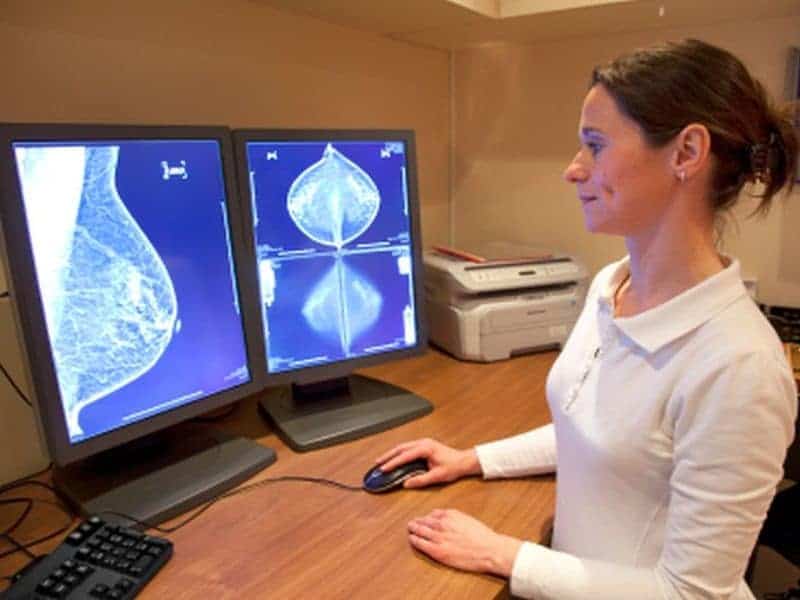THURSDAY, May 9, 2019 (HealthDay News) — Mammography-based deep learning (DL) breast cancer risk models are more accurate than models that consider traditional risk factors and breast density, according to a study published online May 7 in Radiology.
Adam Yala, from Massachusetts Institute of Technology in Cambridge, and colleagues conducted a retrospective study involving 39,751 women with 88,994 consecutive screening mammograms to develop a mammography-based DL breast cancer risk model. For each patient, all examinations were assigned to training (71,689 examinations), validation (8,554 examinations), or test set (8,751 examinations). Three models were developed to assess breast cancer risk within five years: a risk factor-based logistic regression model (RF-LR) that included traditional risk factors, a DL model (image-only DL) that used mammograms alone, and a hybrid model combining traditional risk factors and mammograms.
The researchers included 3,937 women in the test set. The areas under the receiver operating characteristics curve (AUCs) were 0.70 and 0.68 for the hybrid DL and image-only DL, respectively. The AUCs for RF-LR and a comparison model that included breast density (Tyrer-Cuzick [TC] model) were 0.67 and 0.62, respectively. Compared with the TC and RF-LR models, the AUC for hybrid DL was significantly higher.
“These results support the hypothesis that mammography contains informative indicators of risk not captured by traditional risk factors, and DL models can deduce these patterns from the data,” the authors write. “These models have the potential to replace conventional risk prediction models.”
Massachusetts Institute of Technology and Massachusetts General Hospital have filed patents on the deep learning models.
Abstract/Full Text
Editorial (subscription or payment may be required)
Copyright © 2019 HealthDay. All rights reserved.



